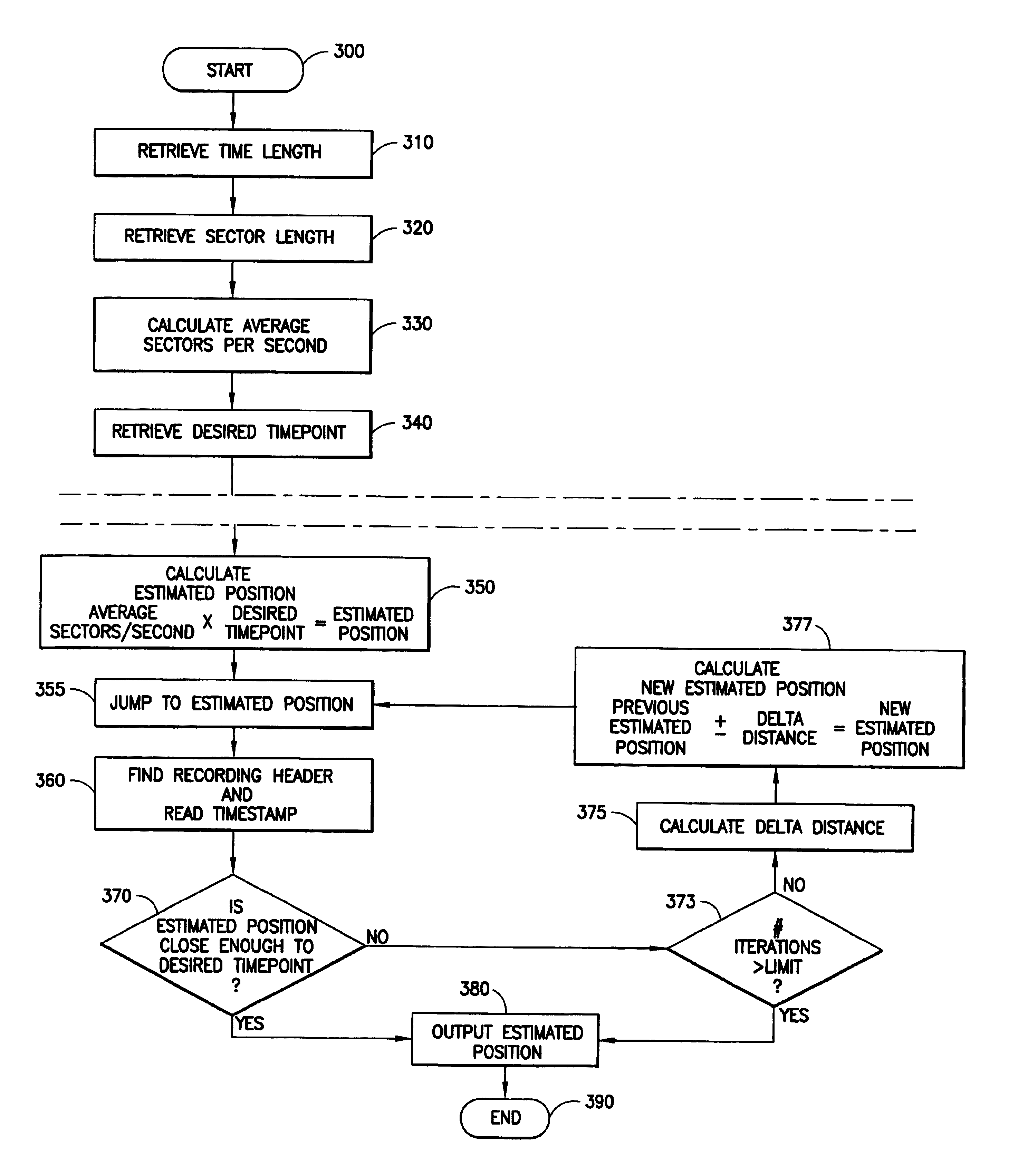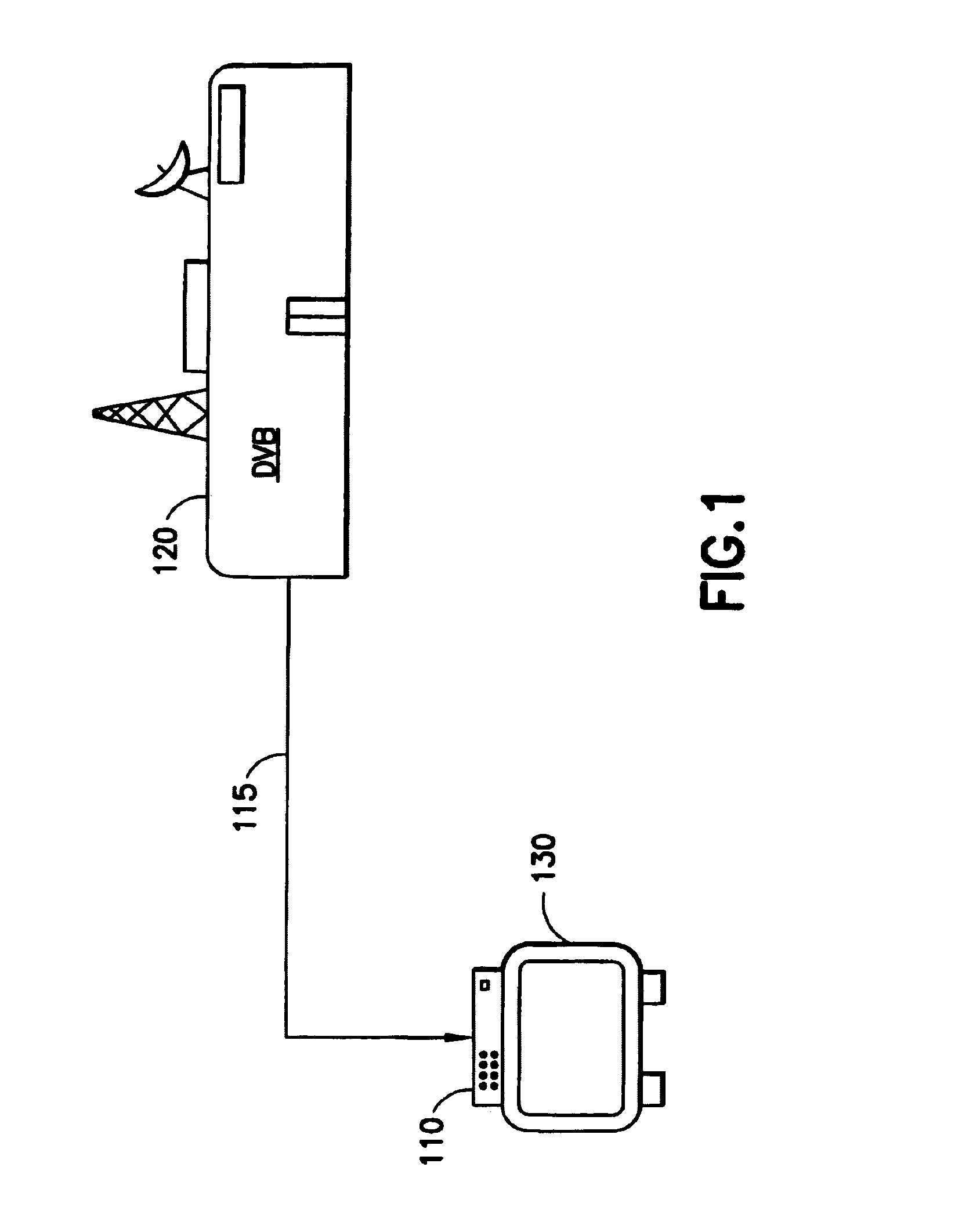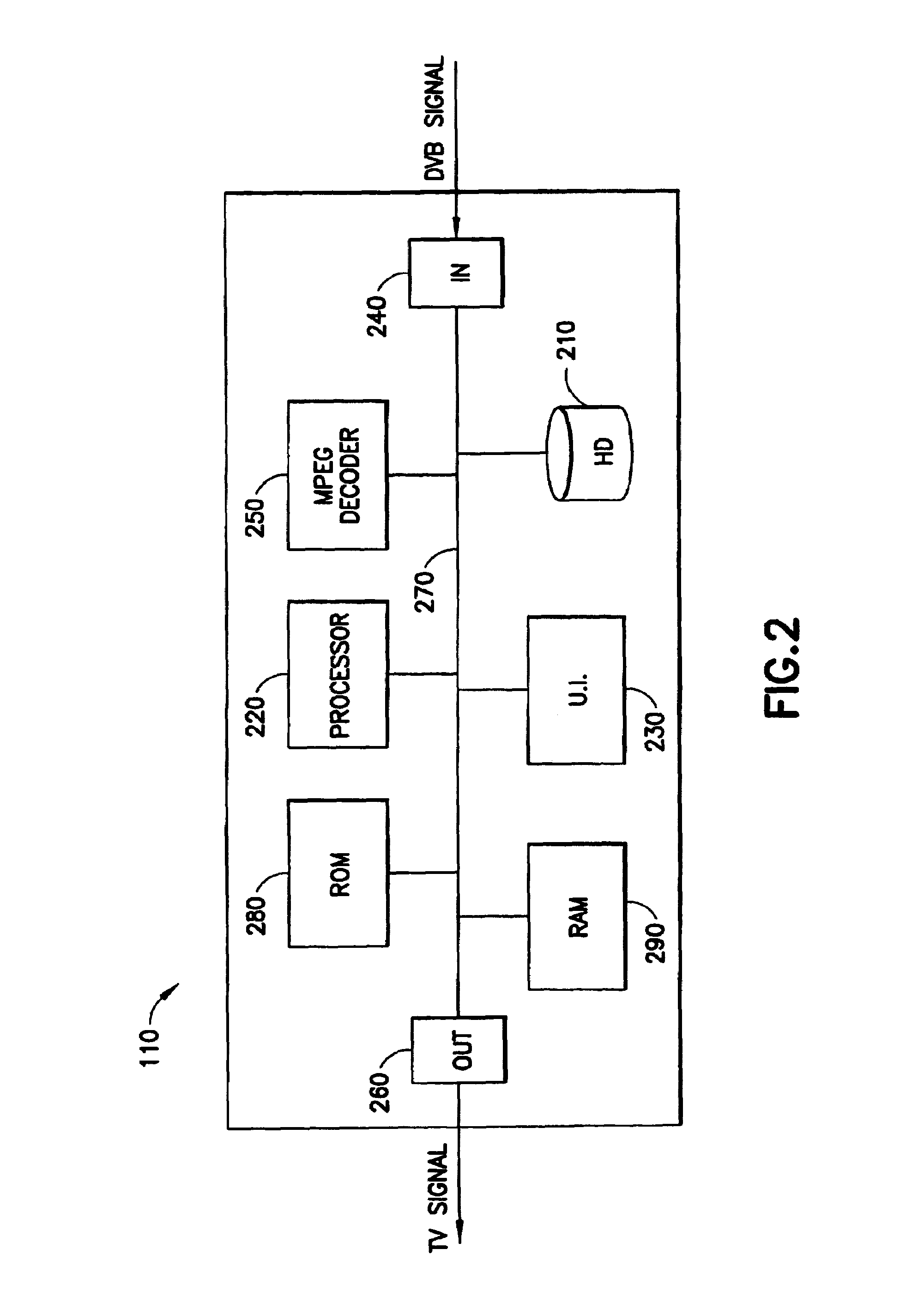System and method for jumping to a timepoint in a MPEG file
a timepoint and mpeg file technology, applied in the field of digital audio and/or video data storage and playback, can solve the problems of large errors, time-consuming method of searching, and difficulty in performing a search function or jumping function in an mpeg file, and achieve the effect of sufficiently accurate and without using too much processing and/or storage resources
- Summary
- Abstract
- Description
- Claims
- Application Information
AI Technical Summary
Benefits of technology
Problems solved by technology
Method used
Image
Examples
Embodiment Construction
[0023]The presently preferred embodiment of the present invention is implemented in a set-top box (STB), or integrated receiver decoder (IRD), as shown in FIG. 1. The IRD 110 receives television programming being broadcast in MPEG format from digital video broadcast (DVB) center 120 and presents a decoded signal to television set 130. In the presently preferred embodiment, the DVB center 120 broadcasts in MPEG-2 format. The communication link 115 over which the television programming is broadcast may be wired (e.g., cable, fiber-optic, etc.) or wireless (e.g., radiofrequency broadcast, satellite broadcast, etc.). Although the presently preferred embodiment is an IRD / STB in a digital television broadcast environment, other embodiments of the present invention may be implemented in computers, cell phones, personal digital assistants (PDAs), or any devices capable of playing back stored MPEG files. Likewise, the source of the MPEG files may be a portable storage medium, such as a digit...
PUM
| Property | Measurement | Unit |
|---|---|---|
| time | aaaaa | aaaaa |
| length | aaaaa | aaaaa |
| time unit rate | aaaaa | aaaaa |
Abstract
Description
Claims
Application Information
 Login to View More
Login to View More - R&D
- Intellectual Property
- Life Sciences
- Materials
- Tech Scout
- Unparalleled Data Quality
- Higher Quality Content
- 60% Fewer Hallucinations
Browse by: Latest US Patents, China's latest patents, Technical Efficacy Thesaurus, Application Domain, Technology Topic, Popular Technical Reports.
© 2025 PatSnap. All rights reserved.Legal|Privacy policy|Modern Slavery Act Transparency Statement|Sitemap|About US| Contact US: help@patsnap.com



